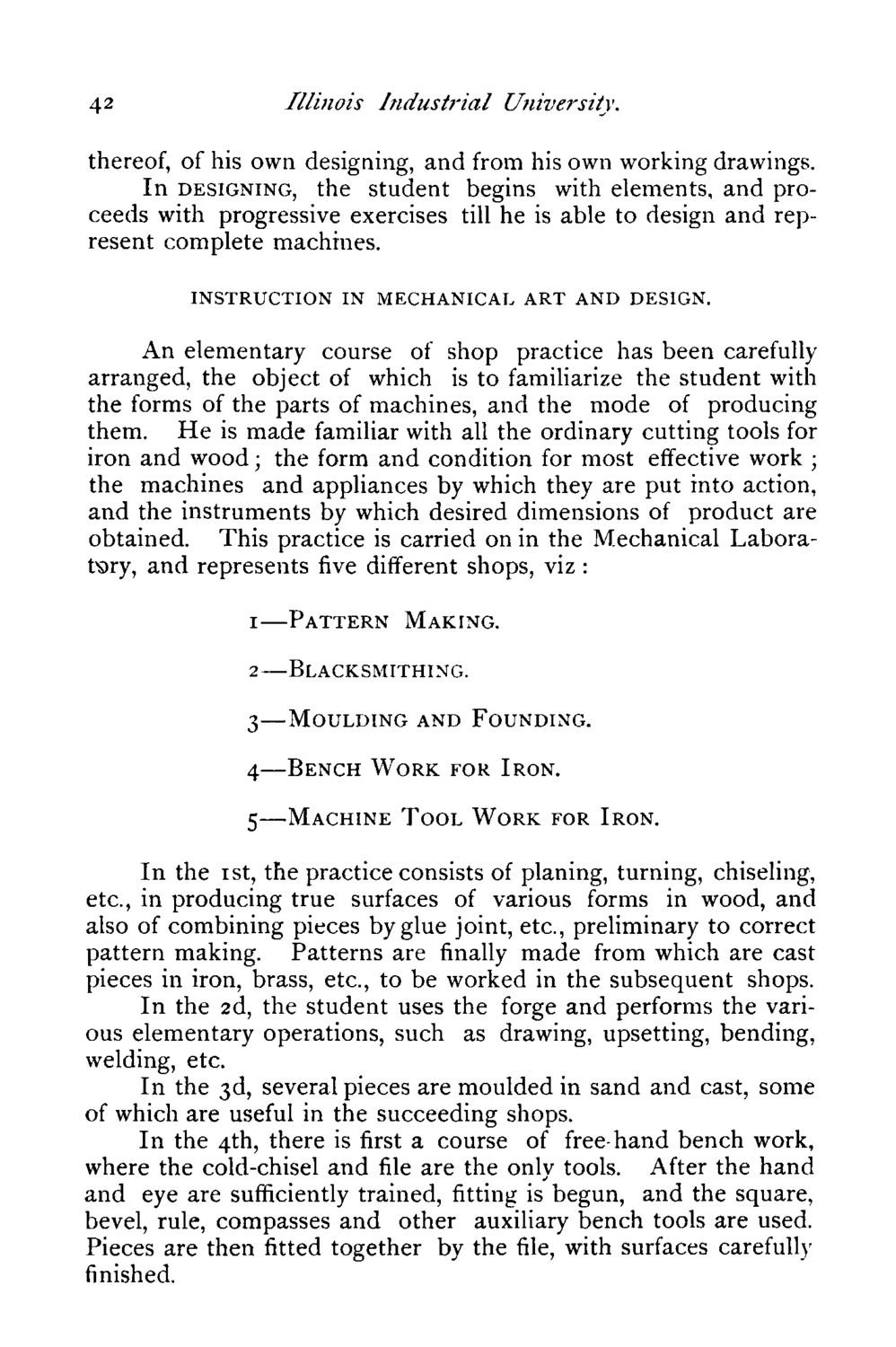| |
| |
Caption: Course Catalog - 1878-1879
This is a reduced-resolution page image for fast online browsing.

EXTRACTED TEXT FROM PAGE:
42 Illinois Industrial University. thereof, of his own designing, and from his own working drawings. In DESIGNING, the student begins with elements, and proceeds with progressive exercises till he is able to design and represent complete machines. INSTRUCTION IN MECHANICAL ART AND DESIGN. An elementary course of shop practice has been carefully arranged, the object of which is to familiarize the student with the forms of the parts of machines, and the mode of producing them. He is made familiar with all the ordinary cutting tools for iron and wood; the form and condition for most effective work ; the machines and appliances by which they are put into action, and the instruments by which desired dimensions of product are obtained. This practice is carried on in the Mechanical Laboratory, and represents five different shops, viz : i—PATTERN MAKING. 2—BLACKSMITHING. 3—MOULDING AND FOUNDING. 4—BENCH WORK FOR IRON. 5—MACHINE TOOL WORK FOR IRON. In the ist, the practice consists of planing, turning, chiseling, etc., in producing true surfaces of various forms in wood, and also of combining pieces by glue joint, etc., preliminary to correct pattern making. Patterns are finally made from which are cast pieces in iron, brass, etc., to be worked in the subsequent shops. In the 2d, the student uses the forge and performs the various elementary operations, such as drawing, upsetting, bending, welding, etc. In the 3d, several pieces are moulded in sand and cast, some of which are useful in the succeeding shops. In the 4th, there is first a course of free-hand bench work, where the cold-chisel and file are the only tools. After the hand and eye are sufficiently trained, fitting is begun, and the square, bevel, rule, compasses and other auxiliary bench tools are used. Pieces are then fitted together by the file, with surfaces carefully finished.
| |